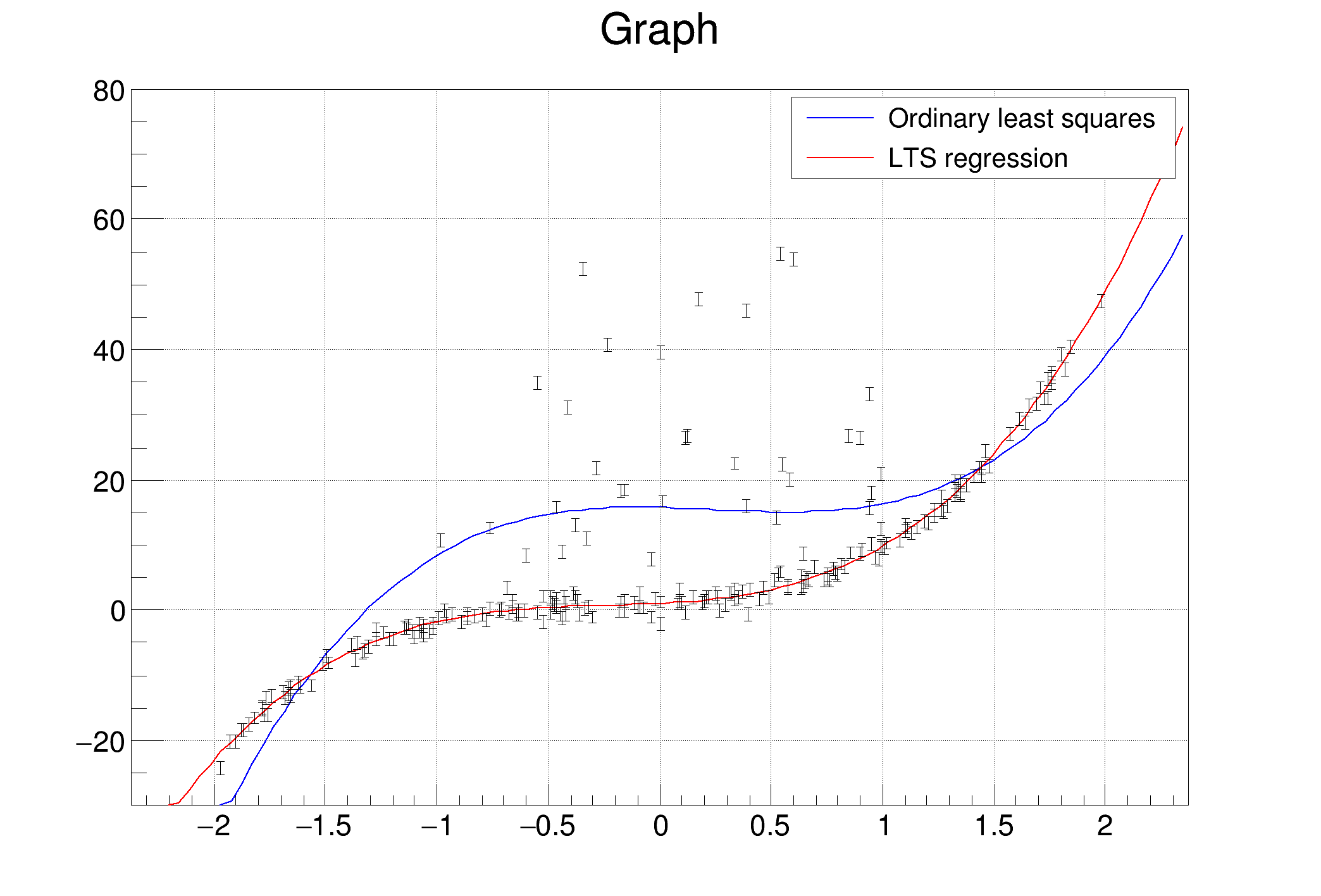
 This tutorial shows how the least trimmed squares regression, included in the TLinearFitter class, can be used for fitting in cases when the data contains outliers.
This tutorial shows how the least trimmed squares regression, included in the TLinearFitter class, can be used for fitting in cases when the data contains outliers.
Here the fitting is done via the TGraph::Fit function with option "rob": If you want to use the linear fitter directly for computing the robust fitting coefficients, just use the TLinearFitter::EvalRobust function instead of TLinearFitter::Eval
Processing /mnt/build/workspace/root-makedoc-v614/rootspi/rdoc/src/v6-14-00-patches/tutorials/fit/fitLinearRobust.C...
Ordinary least squares:
****************************************
Minimizer is Linear
Chi2 = 606758
NDf = 246
p0 = 15.724 +/- 0.0887641
p1 = -0.835912 +/- 0.14096
p2 = -3.40616 +/- 0.0607296
p3 = 4.82569 +/- 0.0602628
Resistant Least trimmed squares fit:
****************************************
Minimizer is Linear / Robust (h=0.75)
Chi2 = 634792
NDf = 246
p0 = 1.00953
p1 = 1.71148
p2 = 2.97937
p3 = 4.07752
void fitLinearRobust()
{
for (i=0; i<fraction; i++){
e[i]=1;
y[i]=1 + 2*x[i] + 3*x[i]*x[i] + 4*x[i]*x[i]*x[i] + e[i]*r.
Gaus();
}
for (i=fraction; i<npoints; i++){
e[i]=1;
y[i] = 1 + 2*x[i] + 3*x[i]*x[i] + 4*x[i]*x[i]*x[i] + r.
Landau(10, 5);
}
TF1 *ffit1 =
new TF1(
"ffit1",
"pol3", -5, 5);
TF1 *ffit2 =
new TF1(
"ffit2",
"pol3", -5, 5);
TCanvas *myc =
new TCanvas(
"myc",
"Linear and robust linear fitting");
printf("Ordinary least squares:\n");
printf("Resistant Least trimmed squares fit:\n");
grr->
Fit(ffit2,
"+rob=0.75");
leg->
AddEntry(ffit1,
"Ordinary least squares",
"l");
leg->
AddEntry(ffit2,
"LTS regression",
"l");
}
- Author
- Anna Kreshuk
Definition in file fitLinearRobust.C.



 This tutorial shows how the least trimmed squares regression, included in the TLinearFitter class, can be used for fitting in cases when the data contains outliers.
This tutorial shows how the least trimmed squares regression, included in the TLinearFitter class, can be used for fitting in cases when the data contains outliers. 